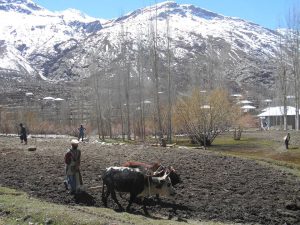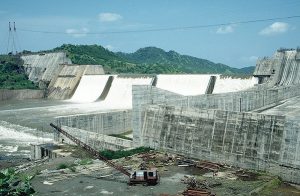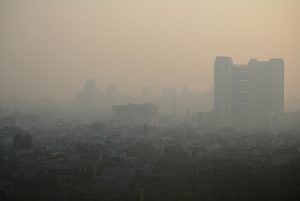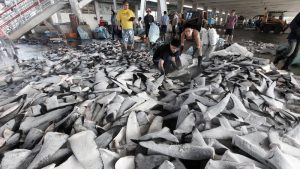Muhammad Nageen, a farmer in Thoi Valley in Pakistan’s mountainous Gilgit Baltistan area, is not familiar with the phrase climate change, but knows only too well the phenomenon of untimely, heavy rain that has led him to shift from wheat to potatoes and onions.
As experts debate the why and the how of climate change in seminar rooms the world over and unseasonal rains lash Pakistan and neighbouring India, leading to fears of food production being significantly lowered, farmers like Nageen are crafting their own mitigation plans.
The sowing season for a single crop started in the mountain valleys of the upper Indus region of Gilgit Baltistan shortly after the harsh winter.
But this time Nageen decided to do something different. His wheat crop – the source of his livelihood and on which depended food as well as fodder — had been damaged for several years due to the change in the rain pattern and he has now moved to potatoes and onions that he believes will be more resilient.
Firm in his belief that wheat will no longer bring in the dividends, he is keen on converting his 20 acres of fertile land to orchards in the long term. Every year, the ready wheat crop is either partially or completely damaged by the end of August or early September because of torrential rains. First, the standing crops flatten due to strong winds, then the grain swells and ultimately becomes useless due to the moisture.
“I have no other option but to grow potatoes and onions to sell in the market and buy wheat in return. Growing wheat in these valleys seems to no more a productive option,” said Nageen. Every year, he added, the wheat crop is reduced to rubbish.
Experts believe this is part of a climate change, which has been affecting the upper Indus area. The snow continues till early March and the harsh winter sets in in mid September itself. It takes at least five months to grow wheat in the mountain areas.
Like Nageen, many others are doing a rethink on how to adapt to changing circumstances. Hundreds of small farmers in the region are shifting from wheat. Many people have started growing orchards of apricots, almonds and apples as an alternate option to avoid losses of livelihood due to erratic rainfall.
Mayoon Khan from Barkulti village is amongst those suffering the consequences of hail and heavy rain during the harvest season. “I have planted apricot and cherry trees in two fields. I used to grown wheat in those fields,” he said. In a third field, he is growing potatoes that can withstand the vagaries of rain and also fetch an attractive market price.
Ashraf Wali from Umalchat village is in the same boat too. The certainties of the past no longer hold and they are unsure about when to sow the crop.
Expert view
According to Babar Shahbaz, professor at University of Agriculture, Faisalabad, climate pattern had rapidly changed in the last eight to 10 years, impacting on the agriculture sector. There was significant change in the timing of winter and summer as well as the duration and extent of rain; this had many implications for crops.
Shahbaz said the government had not taken any significant step to protect the farmers and provide them with new technology and seed varieties to meet the changed scenario.
Provincial governments, he suggested, should take measures to educate farmers and how they should respond to climate change.
Ghulam Rasool, senior researcher at the Pakistan Meteorological Department (PMD) has been quoted as saying that winter rains in the north and central parts of Pakistan and the sudden rise and fall in temperature are related to climate change.
“I will suggest that farmers revise the crop calendar according to the changed weather,” Rasool suggested. Farmers, he added, should start sowing the crop early so they can harvest before heavy monsoon rains in late August and September.
The situation is not confined to Gilgit Baltistan. Farmers in Sindh, Punjab and Khyber Pakhtunkhwa are facing similar problems, he said. There would earlier be no heavy rain during the wheat harvesting season in Sindh in March but it is different now.
According to Sher Ahmed of the Pakistan Agriculture Research Council, Gilgit Baltistan, unexpected rains have become common during the harvesting season, particularly in the far flung mountain areas of Ghizer, Skardu, Gojal, Ishkoman and Phunder valleys. “It is difficult for us to predict because of the unexpected change in the weather conditions over the years.”
The government was providing seed varieties in some areas that were helpful for the early preparation of crops. In his view, however, farmers are changing their crop pattern because of comparatively higher market prices of fruit, onion and potatoes as compared to wheat.
Whatever the view, it is likely to be a bad year for millions of farmers in both Pakistan and India. Ibrahim Mughal, chairperson of the Pakistan Agri Forum, estimates that production is likely to be halved because of the rain.
“If the rains come a month ahead of the harvesting time (April to mid-May), it is always disastrous. It can hit production for a crop such as wheat by between 20% and 30%, and if the rain is accompanied by hailstorms and winds then the losses can escalate to more than 50%,” he told tcktcktck.org.
In India, too, prices will be hit. Unseasonal rains have hit the Rabi crop (sown in winter and harvested in spring), particularly wheat. The government has estimated that 30% of the 62 million acres under cultivation have been hit by the unseasonal rain.






